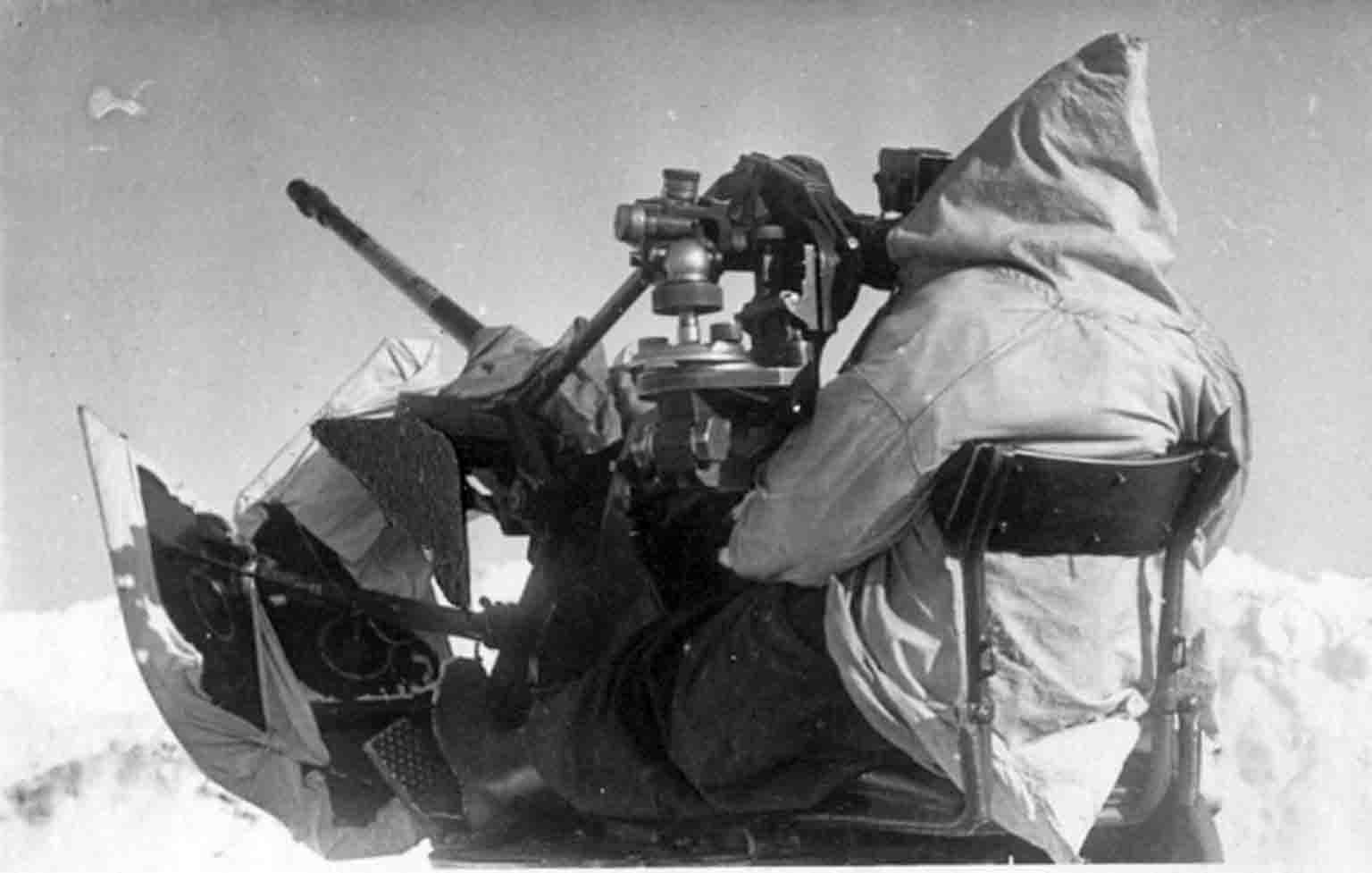World War 2 photo: German 20-mm anti-aircraft gun 2 cm Flak 30 of the Wehrmacht on the firing position for firing at ground targets. December 1942, the Battle of Stalingrad, Eastern Front.
Location: Stalingrad, Soviet Russia
Shooting time: December 1942
FlaK-30
The 2 cm FlaK 30 anti-aircraft automatic cannon was developed by Rheinmetall in 1930; the Wehrmacht began receiving guns in 1934. The first combat test took place during the Spanish Civil War – as part of the F/88 anti-aircraft unit of the German Condor Legion, where they showed themselves positively due to their relatively low weight, simplicity of design, and the ability to quickly disassemble and reassemble.
Before the outbreak of World War II, at the beginning of 1939, each Wehrmacht infantry division was assigned 12 of the 20-mm FlaK 30 or FlaK 38 anti-aircraft guns.
During World War II, 2-cm FlaK-30 were used as anti-aircraft guns and for firing at ground targets (including for hitting lightly armored vehicles: light tanks, wedges, armored personnel carriers, armored cars, etc.). For this purpose, in addition to the cartridge with a PzGr 39 caliber armor-piercing projectile (cartridge weight 0.33 kg, V0 = 830 m/s), the gun’s ammunition included a cartridge with a PzGr 40 armor-piercing sabot projectile (APS), cartridge weight 0.285 kg, projectile weight 0.10 kg, V0 =900 m/s.
Also, by the time the campaign in France began, this anti-aircraft guns already had prefabricated armor shields 6 mm thick to protect the gun crew from enemy small arms. The shield was assembled from many elements using nuts and rivets, and was attached to the cannon frame. The shield for the barrel and the gunner were separate and were installed separately from the main armor shield.
2 cm FlaK 30 guns were used until the end of World War II.
